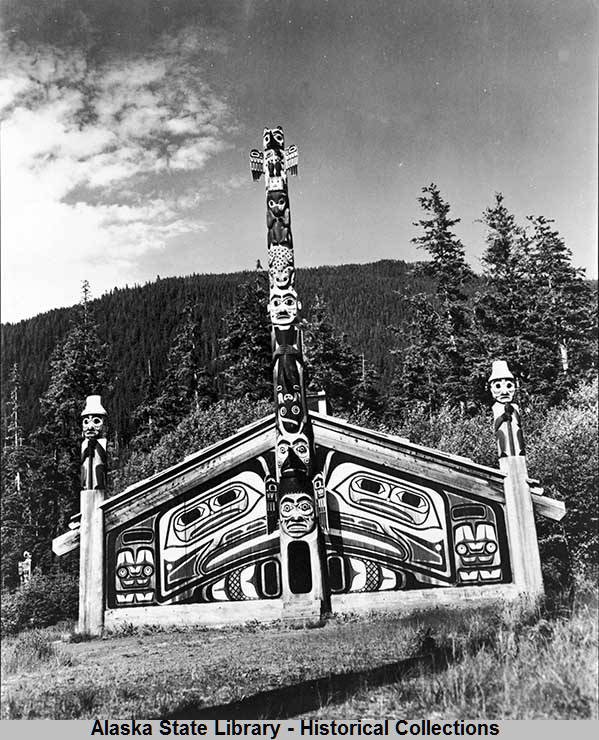
Kichx̱áan (Ketchikan)
Photo courtesy of the Alaska State Library.
From time immemorial, the Tongass people would migrate to Ketchikan Creek to set up seasonal fish camps, processing salmon through smokehouses and sun drying.
Totem poles were another indicator of a village or town used for inclusion in ANCSA.
The Totem Heritage Center was established in 1976 to preserve endangered 19th century totem poles retrieved from uninhabited Tlingit and Haida village sites near Ketchikan.
Later joined by the Tlingit from Cape Fox, the Haida people and Tsimshian people from Canada, Kichx̱áan was a vibrant Tlingit community whose name is even said to have originated from the Tlingit words for white spot and creek, which showed how abundant the salmon were for their people.
As word spread of Ketchikan’s rich resources, miners, loggers and fishermen came to capitalize on its opportunities, catalyzing a confusing and disruptive time for the surrounding Native communities. Along with the introduction of missionaries in the late 1800s, the assimilation of Kichx̱áan and surrounding areas began, promising education to Native children for families who left their traditional villages and way of life.
The formation of the Alaska Native Brotherhood and Sisterhood in Ketchikan in 1920 was a critical development for the Native people of the area, propelling momentum for the local federally recognized tribe, Ketchikan Indian Community, in addition to many other Native advocacy organizations.
Although the modern town of Ketchikan was built in 1913, Kichx̱áan was a thriving hub for neighboring Native villages and remains home to the world’s largest collection of standing totem poles to this day.
The Gut Wain (Chief George Johnson) totem pole is one of the remaining totem poles that stood tall at the center of Kichx̱áan until its replica totem took its place in 1989. Chief Johnson inherited his position as chief of the G̱aanax̱.ádi (Raven/Starfish Clan) of the Tongass Tribe in 1902 and commissioned the totem pole to honor the passing of his mother. Many traditional totem poles are now safely located at the Totem Heritage Center in Ketchikan.
Video by Ketchikan Visitors Bureau

“While being born and raised in Ketchikan, I have tried to leave, but I always come back to the place I call home. Our people have been here for generations and will be for generations to come. To be of this ‘Alaskan’ land is where I subsist with fishing, gathering and living our way of life. For this reason the Alaska Natives Without Land is more important than ever to our people so we can continue our way of life.”


